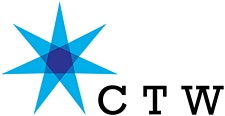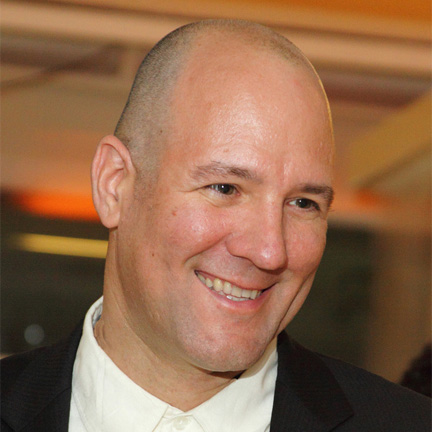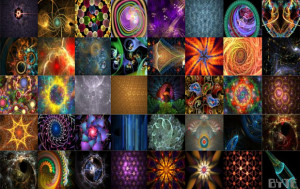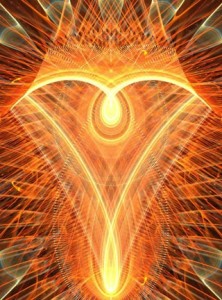By Nina Yankowitz
Scott Draves is a pioneering software artist best known for creating the Electric Sheep, a collective intelligence consisting of 450,000 computers and people that uses mathematics and genetic algorithms to create an infinite abstract animation. His work has been shown at LACMA, MoMA.org, Prix Ars Electronica, ZKM, Art Futura, Emoção Art.ficial Bienial and is in collections world-wide including Carnegie Mellon School of Computer Science, the 21c Museum Hotel, MQS Capital, Google, the Simons Center for Geometry and Physics, and MEIAC. His clients range from Skrillex to the Adler Planetarium. Electric Sheep apps are available for iPad and Android. Draves Bomb was one of the first interactive software artworks (1994) and also the first Open Source artwork, and the first interactive reaction-diffusion. His Fuse algorithm (1991) was also extremely influential. In 1990 he received a BS in Mathematics from Brown University and in 1997 a PhD from the School of Computer Science at Carnegie Mellon University for a thesis on meta-programming for media processing.
He is currently employed by Two Sigma to develop the Beaker Notebook. More at http://scottdraves.com
(N.Y.) As a software artist who created the groundbreaking networking tool via your flame algorithm for the Electric Sheep animation project, did you want to conceptually explore the ultimate possible matrix of interactive collaborative events in this discourse?
(S.D.) Thank you for the kind question. Yes it is an exploration into the boundary between humanity and computers and how it is becoming so convoluted…
(N.Y.) Is this because of the blurred Boundary Line?
(S.D.) Yes…Conceptually, the big question is to what extant can computers themselves be alive, think, be creative, and ultimately to possess awareness. So this is an exploration by creation yes, but it’s not arbitrary, it’s goal-directed. I see a mountain in the distance.
(N.Y.) Like a Stairway to Somewhere, to Nowhere, to Tomorrow?
(S.D.) I like “stairway”. What comes after is up to you.
(N.Y.) Do you curate final sheep presentations from those who engaged your software and picture to contribute their personal image, or does the communal vote ultimately determine what will exist within the remaining image platform?
(S.D.) There are many layers of influence. In my museum quality collectible work, yes, I curate everything. Those pieces are very large, highly polished, nonlinear videos that I curate by selecting and connecting, and culling together those designs that evolved within the collaborative distributed network. The “design factory” runs 24/7 (so far over 16 years) generating new sheep based on communal voting and uploads. I do admit to putting my thumb on the scales in this virtual world at times. Mostly it is independent and I try to have a light touch.
(N.Y.) Was a motivation to create this collaborative tool driven by making a social networking tool that allows selecting from a hierarchical display of multiple perspectives–e.g. an arrangement or classification of things according to the relative importance for determining inclusiveness?
(S.D.) My motivation is to reproduce the essence of life, its diversity and subtlety in virtual and digital form. Not an exact copy, like “virtual reality” but more like “virtual unreality”. The genetic algorithm, the family trees, and the interaction of the gene pool with the public wasn’t really the motivation but rather a device–one that works better than I had hoped.
(N.Y.) That’s an interesting twist on the “The Uncanny Valley” Syndrome. Have you found submitted contributions that break your rules re: your virtual universe interesting and if so, have any of them brought forward new possibilities to your framework?
(S.D.) Submissions that “broke the rules” are very rare. I would say it is more painful than interesting and it’s online social drama, which isn’t what I’m going for. But in one case yes, a vandal attacked the network (not submitting designs but hacking his client to upload porn instead of rendering). This incident actually did lead to a fundamental hardening of the system architecture that, in point of fact solved multiple, seemingly unrelated, problems.
(N.Y.) Can you expand on the unrelated problems this process of tightening the system architecture resolved? If you feel able to share, can you describe the method you used to “harden the architecture”?
(S.D.) Yes, it was building a reliable distributed computing platform on top of an unreliable (buggy and/or hostile they merge) computing fabric. E.g. cosmic rays flip random bits, corrupting the graphics unpredictably. The trick was adding redundancy to detect glitches without compromising performance.
(N.Y.) Was John Cage’s works with indeterminate permutations of any interest to you when creating your algorithm?
(S.D.) Yes, I’ve been a big Cage fan since the 80s and on that front, also a fan of Brion Gysin.
(N.Y.) Are you referring to Gysin’s “Dream Machine” that he created and William Burroughs collaboratively developed and used?
(S.D.) Yes, and the cut-up technique (the literary technique in which a text is cut up, literally, with a razor blade and rearranged to create a new text).
(N.Y.) Who have been some influences, both theoretical and/or experiential, that you feel edified the creation of the Beaker notebook?
(S.D.) The direct influences are all the great existing open source IDEs and tools for the languages that make up Beaker: IPython, R, the JVM languages, the web browser and JS/HTML5.
(N.Y.) Are you concerned with how to make sense of the conceptual polyphony of everyone’s democratic Web?
(S.D.) I am ok with it not making sense and generally being beyond my comprehension.
(N.Y.) Is this because the Web is no longer Democratic?
(S.D.) Was anything ever? I believe in progress.
(N.Y.) Do you foresee using the Beaker Notebook to allow crunching global multiple perspective data via collaborative tagging of similarities clustered and mapped in the virtual space?
(S.D.) Yes definitely. Here’s the closest we’ve come so far: protein networks and social graphs visualized on the GPU with Beaker.
More and better coming 🙂
(N.Y.) Do you envision using The Beaker notebook as an analytic tool for predicting and assessing “likes” and “wants”?
(S.D.) I don’t plan on using it on the existing electric sheep network, but do plan on using Beaker Notebook as a platform to prototype completely new art works.
(N.Y.) Thanks for sharing your interesting perspectives Scott. It has been fascinating to learn about your work and some of the underlying concepts.
For further information on Scott Draves’ projects please go to links below:
BeakerNotebook.com
ScottDraves.com
@Scott_Draves
Interviewer
Nina Yankowitz is an American visual artist known for her work in new media technology, site specific public works, and installation art. She is a National Endowment for the Arts fellow, and a Pollack-Krasner Foundation Award recipient.



